Introduction
Getting a new puppy is one of the most exciting things you can do, you have gained a new furry friend and member of your family. You can be overly tempted to just cuddle and play with them all day.
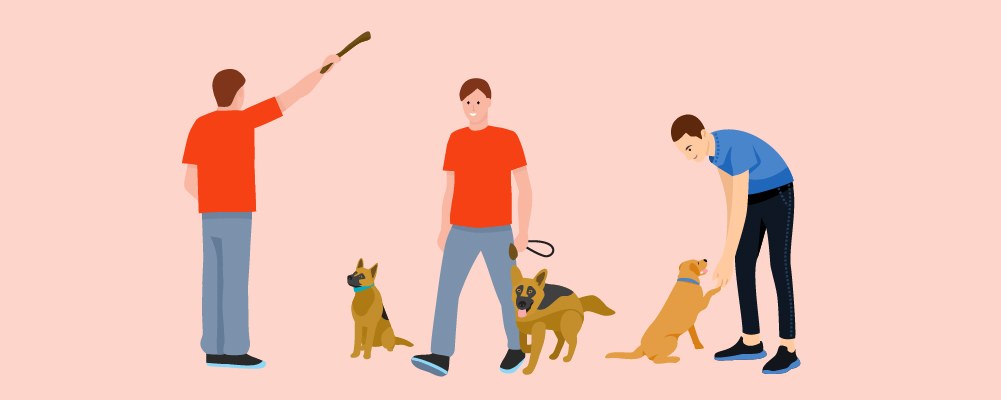
This is not to say that you should not cuddle with them and play with them a lot too, having a close bond with them is important. However, you need to set aside training time as well.
While you may rather spend all your time cuddling them while they’re a cute puppy, proper training will make it easier on you both as they get older. Having a dog that is well-trained saves you a lot of time and trouble later in their life.
Not only this but training also helps you to build an even closer bond with your dog, and what more can you ask for?
Training prevents issues such as behavioral problems, accidents and even missing dogs!
So, how do you train them, and what should you teach? We have the answers!
Table of contents
What To Teach Your Puppy
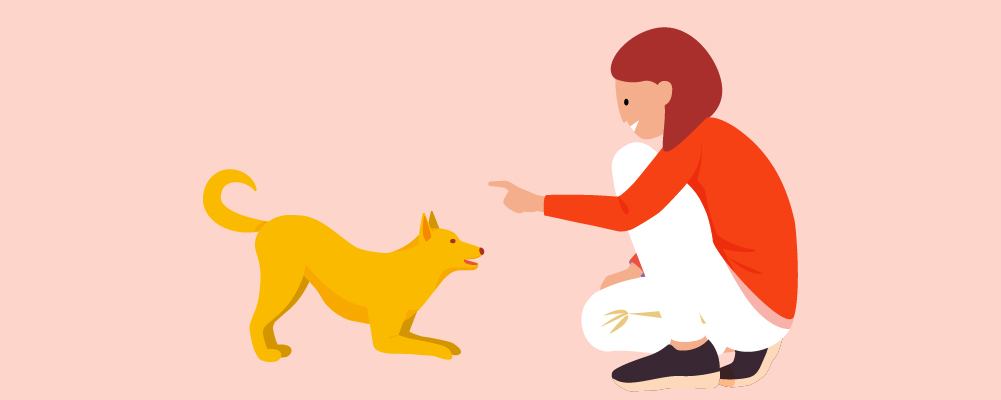
As you train your pup you want to start off simple. Start with staying, sit, down, and coming here. Once they get the hang of these and how learning works, you can start to teach other commands.
Whenever they do well and perform the task you want them to, give them a reward. Positive reinforcement is important in all animals, even humans, so always use this in training your pup.
If you are not sure how to teach your dog, you can always try out a puppy school through a vet, they help you learn how to teach your dog in a healthy way.
Nipping/Biting
Puppies, like most animals, even our babies, learn to explore their new world using their mouth. It is normal, but it shouldn’t last too long, and can develop into a bad habit later on. It is important to stop it while you’re ahead.
You should remove items that you do not want them to chew, and provide them with toys they can chew on. Toys will be more satisfying for them, and it should keep them away from chewing on things they shouldn’t be chewing on.
Do not forget that if they get too rough when you play with them, or if they start biting, stop playing with them. Do not shout or yell, as negative reinforcement tends to spur bad behavior, simply stop playtime, so they know it’s bad.
Handling
You need to make sure your pup is okay being handled, this includes handling by you, other people, and of course vets. When you cuddle your puppy, get them accustomed to being touched all over, and always encourage a belly rub, so they lay on their back.
As they get more comfortable with touching, move, flex and extend their legs, and joints, look at their feet, open their mouth, look into their ears and so on.
This helps to prepare them for vet visits which might otherwise be unpleasant for them. When they are okay with this kind of contact, give them a treat, so they know that it is good, and they did well.
Sitting
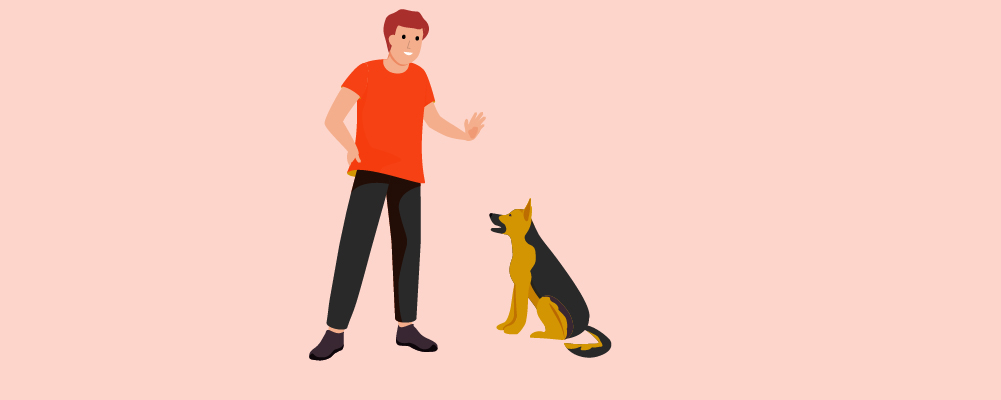
Some dogs will be fidgets, and getting them to sit will never be easy. So this one can be a challenge for some, even if the dog is otherwise well-behaved. It is ideal to teach them younger, before they get too fidgety.
Place some food near their nose, move it up, and over the back of their head. They should sit. Then they do this, give them a bit of food.
Now, to really nail this, as you do this, say ‘sit’, and they will form a positive association with the word sit, and over time they will start to sit when you say sit, when they do this give them a treat, eventually they will do this without a treat, but include a treat until it’s not needed.
Waiting
Waiting can be another one that can be as difficult as ‘sitting’. It is best to master ‘wait’ after ‘sit’. You want to put food in front of you, down on the floor, and gently restraining them via their harness or collar.
As you do this, hold your hand up like a stop sign and say ‘wait’. Then take a biscuit from their bowl and give it to your dog by hand if they stay sat.
You can break the waiting by saying ‘okay?’ and point to the treat-containing bowl.
This may take some time to master as the dog will just go for the food as soon as you let go of them most of the time, you need to be stern and enforce them to wait, eventually they won’t need much prompting when they know they get a treat.
Toilet Time
Getting your puppy to go to the toilet outside can be quite a challenge, when they are really young they will not have much bladder control. To encourage them to go outside, provide them with plenty of opportunities to do so.
Take them to the toilet area first thing in the morning, after food, and after play.
Over time, you can learn the cues that tell you, your pup wants to go to the bathroom. If they are sniffing around, they may need to go to the toilet, so get them outside as soon as possible.
You should reward them any time they go to the bathroom outside where you want them to with praise, play, attention, or their favorite toy.
Walking (On A Lead)
An untrained pup will drag you along, instead of letting you take them for a walk. Get the lead and some treads and start walking with your pup. When they get in front of you and start pulling, change the direction of the walk, assuming control.
Reward them with some treats when they follow you in the new direction, continue with this until they walk alongside you and are more calm on walks.
If you are having difficulty with them, then consult a trainer, or attend classes. You should never use a choke/check collar or chain on a dog. These are known to cause serious injuries and will not only hurt the dog but will damage your relationship with them overall.
How To Socialize
Teach your dog how to socialize properly. This means both around people and other dogs and animals. Before you start introducing them to these situations, it is always best to have ‘sit’, ‘down’, and ‘wait’ nailed.
Having these perfected will make it easier. If they jump up on people use the command for ‘down’. Introduce them to other dogs and get them used to social interaction, it is good to start them off with calm dogs, and welcoming people.
As they start to get used to new people and dogs, they will grow more comfortable.
It is also good to teach your dog how to relax. Puppies are often centers of massive energy, either fast asleep or zipping around the place like they’ve been pumped with energy. Teaching them how to relax won’t only help you out, but it will be useful in social encounters too.
How To Sit/ ‘Down’
Teaching a dog to sit can be about more than sitting, notice the ‘down’ command we mentioned in the previous section. Well, sometimes if a dog is overly excited meeting new people, they jump up.
In this instance you say ‘down’, this should have them either stand calmly or sit. In social situations, and inside homes, it is more preferable.
Try to teach the ‘down’ command just after sitting. When they jump up on you, your family, visiting friends, or furniture, use this command, and use treats when they listen.
It is handy to always have treats on hand as you never know when an opportunity may arise outside of normal puppy training time.
How To Be Home Alone
Being home alone is terrifying for a puppy. When we leave home our dogs seem to think we will be gone forever, though we know this is not the case. With puppies, you should never leave them at home alone as long as you would an adult dog.
It is good practice to leave them alone for 10 minutes at first, then 20, then 30, then an hour and so on. Do this progressively over time and give them a safe space with their favorite toys/ blankets, to feel comforted. A crate can even be handy in these scenarios.
In some ways you can train your dog to be at home alone and crate train them at the same time if you use a crate as a safe space! It might sound far-fetched but it can work.
To Not Chew The Furniture
As puppies start teething they will start chewing on absolutely anything they can fit in their mouth. To prevent this reckless behavior, you can do a few things.
Be attentive for starters, like you would your own baby, keep an eye on the puppy to stop their curiosity harming your home or them.
You can crate the puppy if you need to leave them alone for some time, however, do note that the age of your puppy will denote how long they can be in a crate for. A 2-month-old pup can only be left for 2 hours, and so on.
You should also get chew toys, and choose wisely when you do. A chew toy you can put treats in is best as this will always be a first choice above the couch or a shoe.
Things To Remember When Training Your Dog
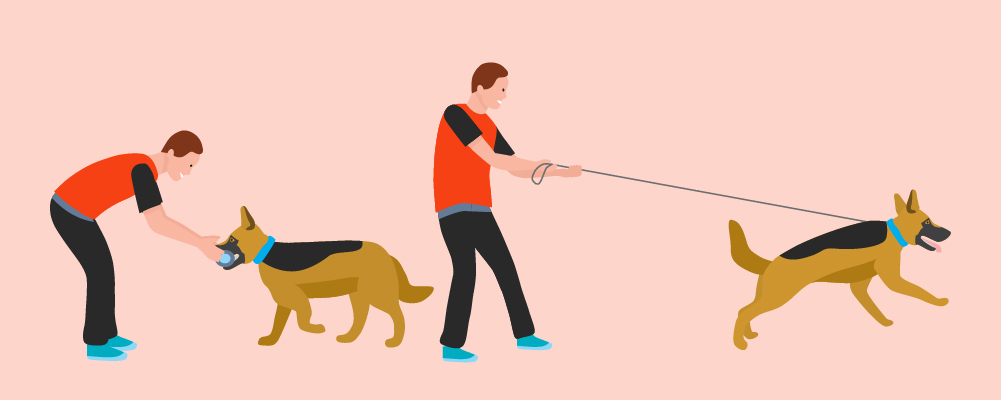
Training takes time, and so it’s not just about what you train, but how you teach it. The way you teach your puppy will reflect in how quickly they pick it up and their willingness to do these things in the future.
Note that you should never use negative reinforcement for unwanted behavior. Negative reinforcement tends to result in anxious or scared dogs, who lash out and are disobedient. Use positive reinforcement for good behavior and give none for unwanted behavior.
Not only this but how, where, and the attitude you have towards training will all matter as well. Your dog will be able to tell if you are bored or do not want to do it and this will reflect on them, so get excited and start taking notes on the tips below.
Make Learning Fun
With any animal you should be sure that you make the learning experience fun. A boring experience will not encourage them to participate. This is part of why treats are involved, and it is worthwhile using play in training.
Training should also be fun in the sense that it has a good result. Puppies, or any animal for that matter (including us) will repeat an action if it yields a good result.
Notice what your puppy finds most fun and what they enjoy and try to mix this in with training. If they enjoy a particular toy, try to use it in training to help encourage them, use treats, and quality time.
Keep Sessions Short And Frequent
Keep the training sessions short, long sessions will get boring and tiring. You only need to do two minutes per time, it can be useful to time the sessions, so you do not go over if you get a bit too invested.
A young puppy can have a short attention span, and repeated actions over and over can diminish their enthusiasm, so try doing training sessions for 2 minutes around five or six times per day if you can.
Keep doing this until they get the hang of it. It does take a long time to perfect it, however, doing it this way will encourage the activity more, and they may even look forward to it.
Space the training out throughout the day and ensure the sessions are not too close to each other.
Practice In Different Areas
As you train them, do not just stick to one location. If you are walking your puppy, try and do training sessions on walks as well as in the house. You can do training in your garden or even just mix up the rooms in which you do the training.
Just ensure that there are minimal distractions around when you are training, until you know they understand what you are asking for.
Changing the location can keep things exciting for your puppy, repeating the same training in the same area can get boring.
Decide On The House Rules
Before you even get your pup you need to start preparing for the training and for having a young dog in the house. You need to set rules for them before they arrive, note things they are allowed to do and things they aren’t.
Consider if they are allowed on your bed, on the couch, in the dining area. Will you give them a chair just for them, and where will they sleep? Consider all these things before they even arrive, so you can start training them in the most basic things from the get-go.
By setting what the rules will be early on, there will be little to no worry for either you or the dog, as well as anyone else in the house.
Also, consider which rooms are off limits for the pup. If you have kids are they allowed in that room? Is the restroom a no dog zone?
Help Your Dog Relax
When your pup gets home, everything will be new, and while you want them to be happy and excited, the chance is they will be anxious, they are away from mom and their little mates.
Present to them a warm (not boiling) blanket or a hot water bottle, and provide the area near their bed with a ticking watch or clock. The warmth will be reminiscent of their mom and the ticking clock will imitate the sound of their littermates, making them more comfortable.
This is extra important if you get a puppy from a shelter, and even more so if they had a bad start to life. It can help to soothe your pet and let them know they are safe now and that this is home.
Set Up A Private Dog Den
We all need a little space to call our own, even if it is small, it is something just for us, and your dog needs this too, even if they are an especially needy dog. Even before you get your pup it is good to set them up with an area just for them, a sleeping place, or just a crate.
They will benefit a great deal from having short times by themselves, even if you are nearby, having a space just for them will help them feel safe and comfortable.
Having this can actually help as you train them in your home. You should also provide positive reinforcement if they are remaining quiet and relaxed inside their little doggie den to reinforce this behavior for any potential future events.
Reward Good Behavior
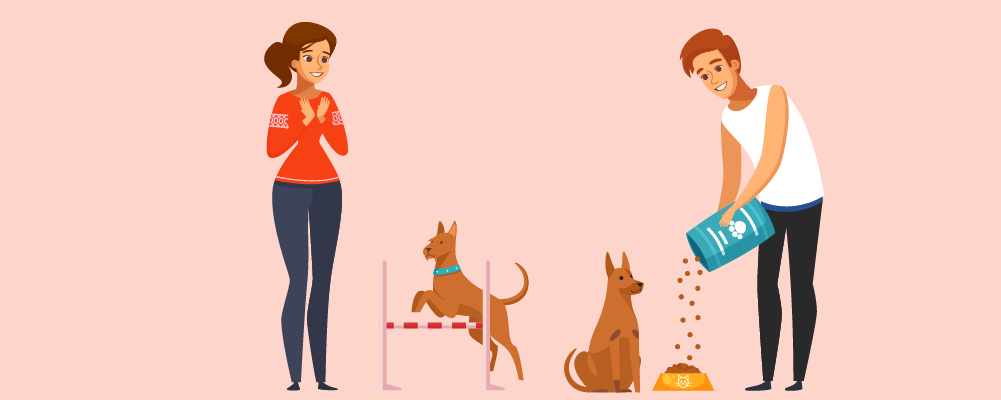
We have already spoken about the importance of positive reinforcement, but it really is important. A dog that receives negative reinforcement for unwanted behavior will become unruly and scared.
If your dog receives positive reinforcement then they will let them know they are getting things right and will encourage them to continue to do so. Dogs remember things that had a positive outcome, and if they continue to reap rewards they will happily do it.
You’re basically hard-wiring their brain to positively associate actions. Which is why you shouldn’t reward bad behavior as this will be confusing for them.
With bad behavior you should ignore it, as they will learn that this behavior doesn’t reap rewards for them, and they would rather do something that earns them a treat.
Discourage Jumping Right Away
Puppies enjoy exerting all their energy in many ways. One of these ways is jumping up when greeting people or animals, and some dogs continue this into adulthood as a bad habit. If they jump on people, do not reprimand them, just turn and face away from them and ignore it.
Wait for the pup to settle down and stop their behavior and when they have stopped and are calm, then give positive reinforcement.
By turning your back towards them and ignoring the behavior they know you don’t want to see this, without being negatively reinforced. It is a gentle way of saying ‘I don’t like this’.
Remember you should never encourage jumping behavior by praising when they are in the pose to jump up. Only praise them when they have stopped.
End Training Sessions On A Positive Note
Remember to always end your sessions on a good note. Your dog is working hard to make you proud as you train them, even if the progress is slow. So, give them praise, perhaps food, some play time, or pet them.
Doing this makes sure they know that putting in effort is good, and they will continue to be optimistic about these training sessions and will always show up.
They will approach training with a wagging tail, a ‘go-get em’ mindset and will be ready to give it their all.
We positively reinforce a dog who completes a training action well, and we also positively reinforce putting in effort and staying dedicated to the training as well.
Rewarding Your Puppy
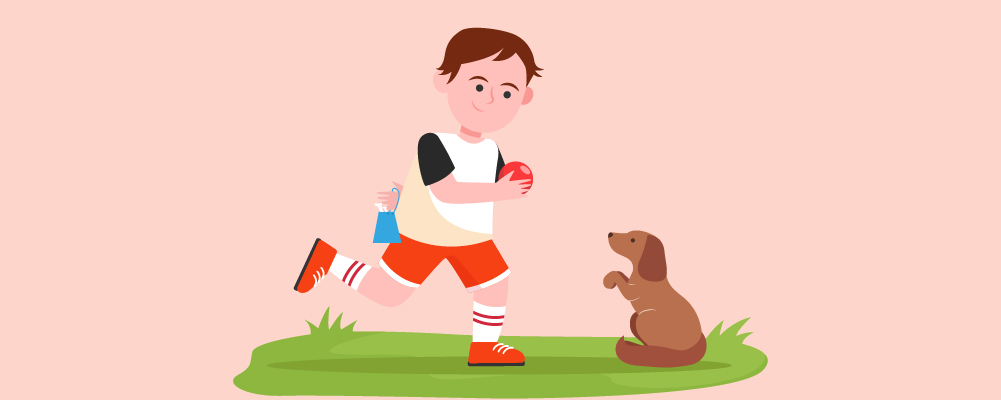
We have spoken about rewards a lot, but what rewards are the best, and how should you do it?
There are many times in which rewarding works well, and many ways in which you can do it. Some dogs will be more responsive to some rewards than others, so you should take note of what rewards your dog likes the best.
Some nervous dogs won’t be hot on pets but might love some play time. When you reward is also important, rewarding at the wrong time can accidentally enforce bad behaviors, which we want to avoid.
So, let’s look at when you should reward and how.
When To Reward
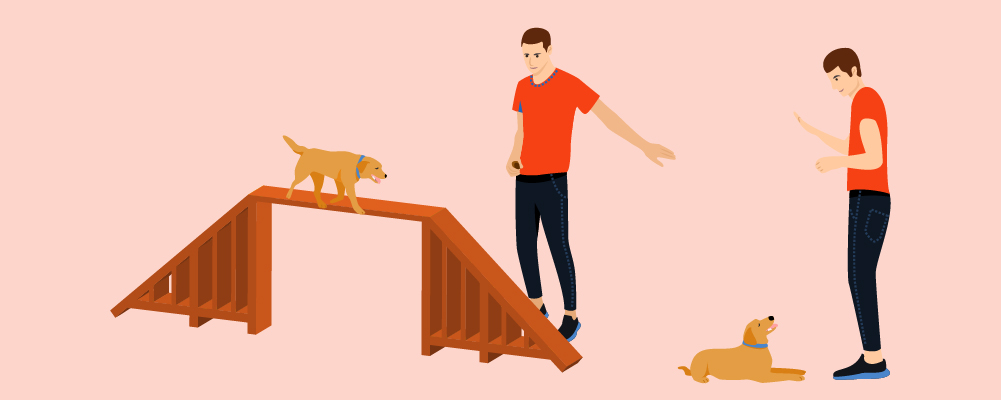
When you should reward is just as important as what the reward is. If you reward at the wrong moment you can confuse your dog, or even encourage unwanted or bad behavior.
There are three main times when you should be ready to reward your dog. You can reward them in a number of ways as we will discuss later.
Make sure you reward at the right moments to build up a positive association for your dog with completing the desired action. This can be done in any form of training, as long as it is in the following three scenarios.
All The Time For The Right Movements
Reward your dog when they do the right action. As you are training your dog if they complete the action correctly, then give them a treat. This means giving a treat even if your dog only completes the action briefly as they learn.
For example, if you are teaching to sit, and they briefly sit and then return to standing afterwards, reward them if this is early on in the learning process. As they get further along, only reward them for longer completions of the action.
If they start doing the action on their own when you desire them to, then provide rewards then as well.
Then For The Whole Action
Once your dog starts completing the action in full you should reward them until they are experienced in completing this action, it will reinforce and encourage them to continue to perform the action when desired.
For example, if you are teaching sit and the dog sits and stays sat, provide a treat then. Keep doing this until you are comfortable with asking them to sit without them needing a treat as a ‘well done’.
The full action should always be rewarded as this is the end goal of the training.
Then For Best Attempts
You should also reward good attempts. Your dog won’t get it right all the time as they are learning, especially as a young puppy. Giving them a reward for trying their best and doing well in their attempts will encourage them to keep trying.
Any dog will try harder if they think there will be a reward at the other end of it.
So, even if the attempt does not reach the point you hoped for, give a reward for effort. May teachers do this in schools, so do the same with your puppy, it will give them enthusiasm if anything.
Rewards Can Be
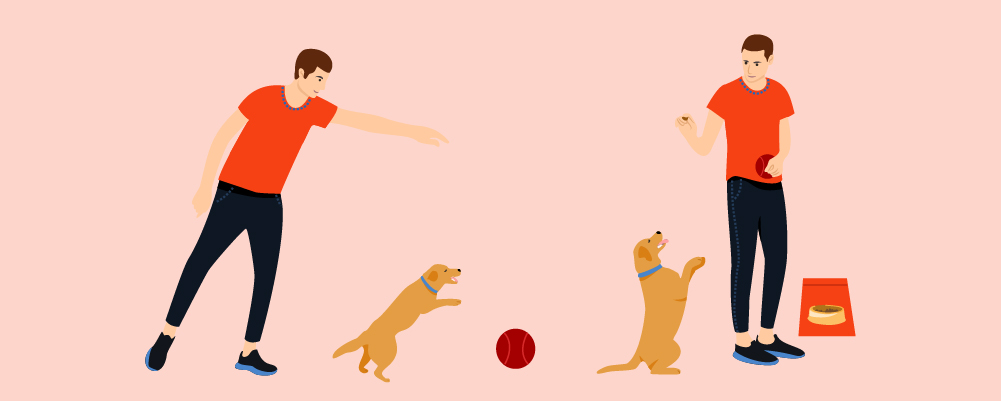
So, we know when to reward a puppy during training, but how should you reward them? There are many different ways you can reward your puppy. Often, it depends most on what kind of personality your dog has.
Obviously, many people will use the go-to reward, as this is one of the easiest ways to encourage a puppy to learn. However, it is not the only form of reward you can give your pup when they do well.
There are different ways, from treats, to verbal or physical praise and even activities that your puppy enjoys. Here are three options of how you can praise your puppy.
Food (This Can Be Part Of Your Dog’s Dinner Or Small Treats)
Food is an obvious choice for praise in many different ways. It does depend on what you are training your dog to do, however. In some situations’ food as part of their dinner may be an appropriate form of reward.
Yet, in many situations, small treats are more appropriate as a reward. You should not give too many treats to your dog, however, they are not healthy and should not make up a large part of your dog’s diet.
This is why it is worthwhile using treats as well as other forms of rewards to balance it out.
Praise
Praise is a good way to go. We do not know if dogs can actually tell what we are saying, but a positive and happy tone mixed with petting and loving physical touch tells your dog that you are happy with them and that they did good.
You can tell them they are a ‘good dog’, tell them ‘you did so well’, and so on. Pairing it with head rubs, or petting will make them feel good and that they did well and are now getting love and praise for it, encouraging the behavior even more.
A Toy Or Game
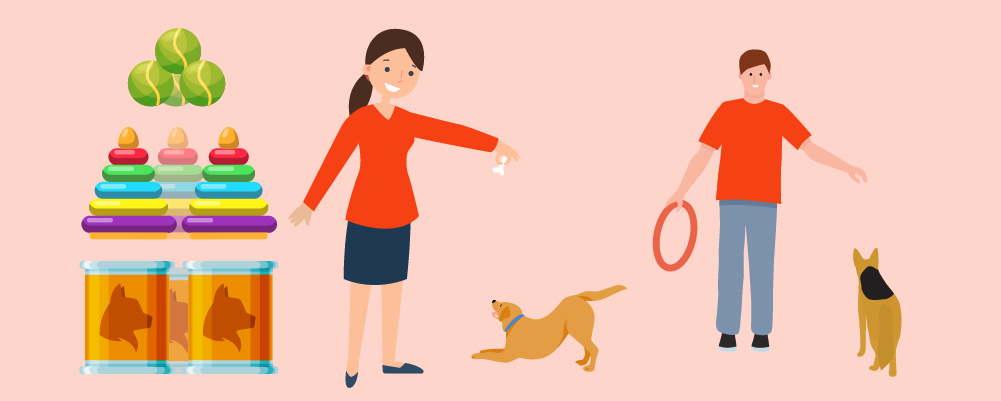
Toys and games are also good forms of rewards. Giving your puppy time to play after they did a good job will show them that if they work hard they can play even harder for doing so.
It is even better if you play with them as part of the reward. You could give them time out in the garden with some toys, play a game of fetch, or just get out their favorite chew toy.
Alternatively, you can mix it up a bit and combine play with treats. You can get chew toys that you can put treats inside of, which work well for teething puppies and pups who really like to chew at things. Giving them a toy like this after they have done well, can make a great combination reward!
Summary
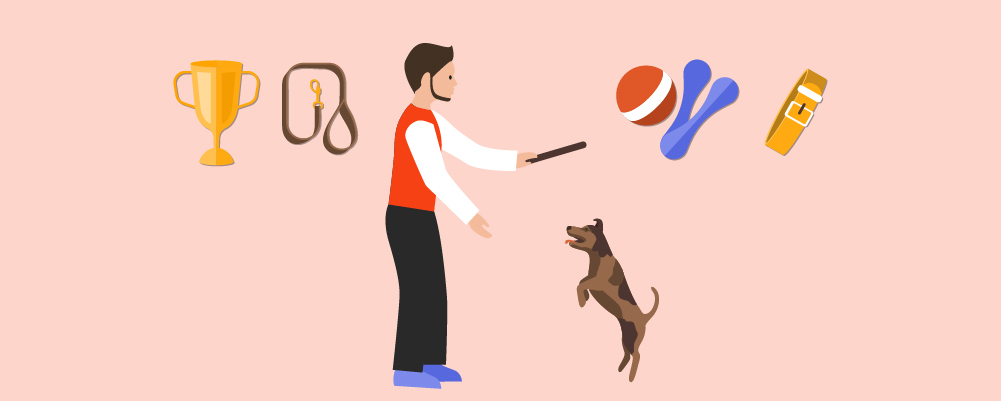
Training a puppy won’t be easy, it will get frustrating and try your patience, but you must be certain to never lose your temper with your pup as it sends the wrong message to them and can hinder their learning.
Know that it will take up effort and time to train them in everything you want them to learn, but it is well worth it in the end when you have a well-trained pup who sticks by your house rules and is obedient.
Most cases of disobedient dogs come from a flaw in the training early on in their lives, so it is super important to train your puppy well. With time, effort, and plenty of rewards, you will soon see your rowdy puppy turn into the perfect member of your family.
